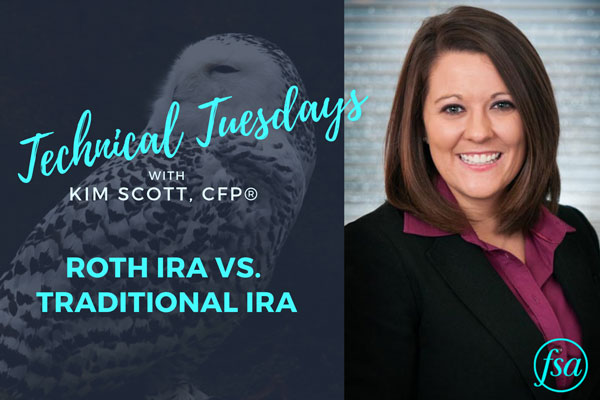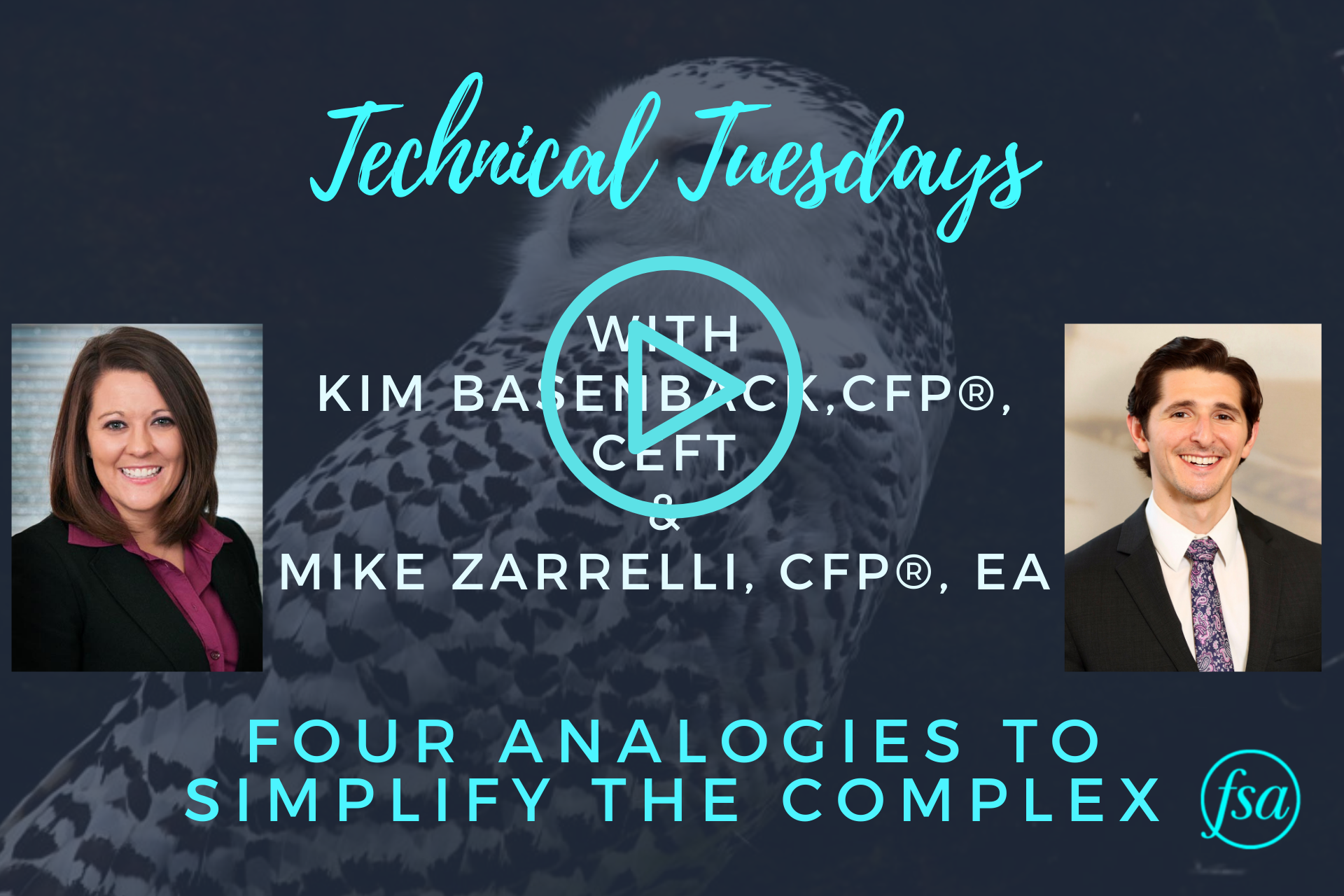the roth ira vs. the traditional ira
What is the difference between a Roth IRA and a Traditional IRA? In this week’s episode of Technical Tuesdays, Kim Scott, CFP®, FSA’s Director of Financial Planning answers this question and helps determine which account is the best fit for you.
Download our IRA Cheat Sheet!

Roth ira vs. traditional ira transcript
Welcome to Technical Tuesday from Financial Services Advisory.
My name is Kim Scott, and I’m your host today. Our question today is: What is the difference between a Roth IRA and a Traditional IRA?
roth ira
First, let’s focus on a Roth IRA. A Roth IRA is an individual retirement account to which you contribute after tax, so there’s not really a tax benefit to contributing now, but all of that money grows tax free.
Now, since this is a retirement account, there are penalties to pulling money out early. Early in the IRS world is age 59 1/2. So let’s say, for example, I put in five thousand dollars into a Roth IRA and it eventually grows to six thousand dollars. I can pull that five thousand dollars out without penalty, but if I touch any of that additional thousand dollar gain, I’m going to have to pay tax and a 10% penalty on that additional money.
One really important thing to note is that you can’t always contribute to a Roth IRA. They do actually have income limits. So if you make over a certain amount, they won’t allow you to contribute to a Roth IRA. So again, something to keep in mind and always consult your CPA.
traditional ira
Now let’s focus on the Traditional IRA. So that too is an individual retirement account, but the really big difference is that the money you’re putting in is pretax. So you’re getting a tax benefit now for contributing to the IRA. This money grows tax deferred so you’re not taxed each year on the earnings. When you are taxed is when you pull money from the account. The money you take out is then added to your ordinary income for the year and then taxed based on your income tax brackets.
Now similar to a Roth IRA, the Traditional IRA, does have a penalty for withdrawing money before age 59 1/2. The difference is, since none of the money has been taxed, you would get a 10% penalty on everything.
Lastly, similar to the Roth IRA, the Traditional IRA has max contributions.
While the Roth IRA does have income thresholds that limit you from contributing, the [Traditional] IRA does not have that. But it does have rules around if you participate in your employer retirement plan, you may be limited on how much you can deduct of your contributions. So it’s important to keep a CPA involved if you decide to contribute.
As you may remember, from our previous video, Traditional IRAs do have Required Minimum Distributions (RMDs). If you didn’t catch that episode, please see the one on Required Minimum Distributions for more information.
So if you have additional questions on Traditional IRAs or Roth IRAs, feel free to give us a call or email us.
For now this is Kim Scott, and this is been Technical Tuesday!
For our disclosures, including our Disclosure Brochure, please visit www.FSAinvest.com/disclosures.





